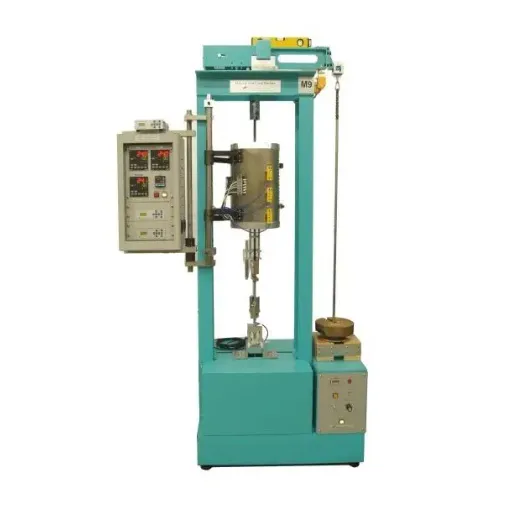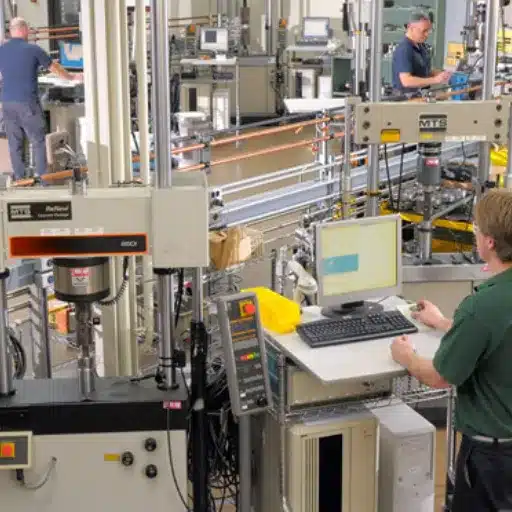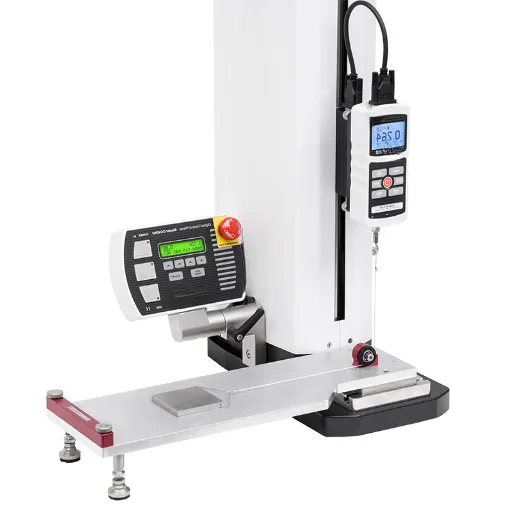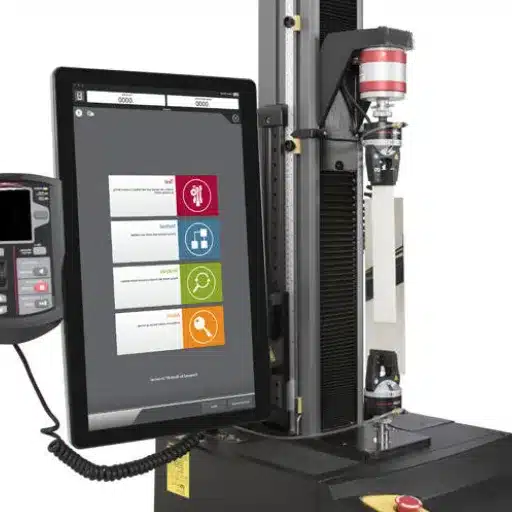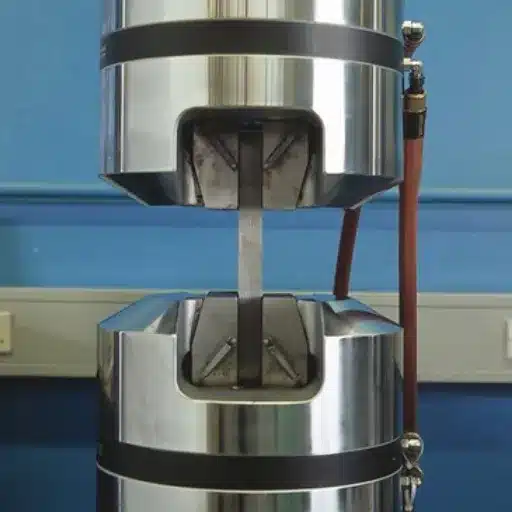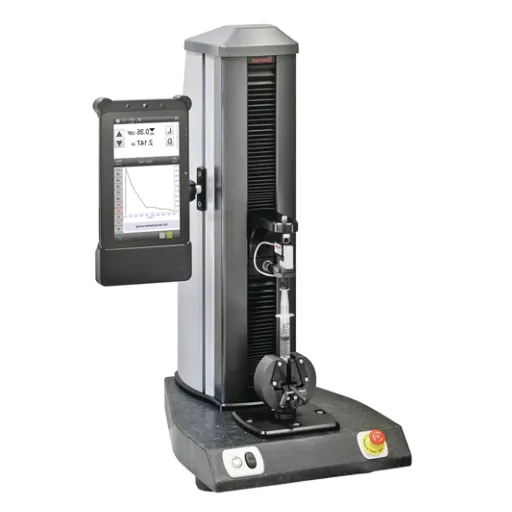Understanding polymer mechanical behavior asks for two very crucial methods: stress and creep. The tests thus ascertain how polymer materials behave over time in response to the application of constant stress or strain, thus relating to usefulness, reliability, durability, and long-term performance. Design of a cutting-edge medical device, automotive engineering, or simple consumer goods will require quantification and prediction of polymer behavior. In this article, we will discuss the science of stress relaxation and creep test, their significance to material science, and the use of these phenomena as a basis for the prediction of material behavior in the field. By then, you will surely have a fairly deep understanding of the in-house tests and how they assist in the commercial applications of polymer-based products. It is hence time that we embark on a journey to explore how these scientific tools enable us to meet material requirements in a world marching toward sustainability.
Understanding Stress Relaxation
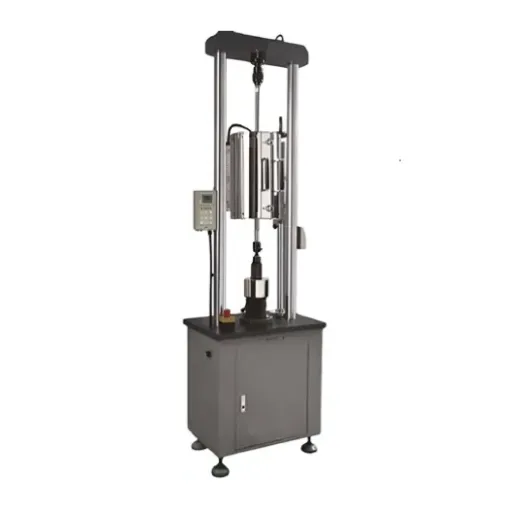
Definition and Principles of Stress Relaxation
Stress relaxation is a material property in which the stress tends to decrease gradually over time under constant strain. This happens during stress relaxation as the material, having been deformed, adjusts its internal structure to release stored energy. Stress relaxation is of utmost importance in viscoelastic materials such as polymers, wherein time-dependent behavior is paramount to mechanical behavior.
The principles of stress relaxation are closely linked with molecular motion inside the material. When a viscoelastic material is constrained to a constant strain, the molecular chains inside the material rearrange themselves with time to relax the stresses. This varying degree of rearrangement occurs depending on temperature, time, and properties inherent to the material. High temperature means rapid movement of chains, thus fast stress relaxation. Contrarily, at low temperature, the chain movement is slow, resulting in slower relaxation.
In case the material needs to be designed to sustain certain performances, stress relaxation becomes a keen matter of consideration. Designers and engineers must consider the stress relaxation of a material in use if indeed it is supposed to keep its shape under long-term loading, as well as applications for seals, gaskets, and medical devices. It is through an analysis of stress relaxation such that industries can develop materials performing with good reliability under various operating conditions, thus assisting the production of efficient and durable products.
Importance of Stress Relaxation Tests in Material Science
Stress relaxation tests are quite essential because they reveal how materials behave when subjected to stress over a period. They measure the decrease in stress exhibited by the material over time while the strain in the material remains constant. Hence, researchers and engineers use these tests to consider the application-based long-term use and reliability of a material. This knowledge is essential while engineering items in which dimensional stability and good mechanical properties are a must.
Key Applications:
- Manufacturing seals and gaskets
- Medical device development
- Dimensional stability assessment
- Long-term reliability evaluation
One of the typical applications of stress relaxation testing is manufacturing seals, gaskets, and medical devices. These components must normally achieve an exact mating fit and functional integrity for a lengthy period under more than normal operating conditions-i.e., different ambient temperatures or sometimes loads. In the absence of sufficient stress relaxation data, the use of particular materials uplifts the failure risk, resulting in operational inefficiencies or possibly safety hazards.
These tests help industries assess materials that behave best in terms of relaxation for a particular application, allowing them to manufacture products that are conducive to working for long periods under certain stringent working specifications. Moreover, the stress relaxation tests keep aid in the development of new formulations for elastomers, polymers, and highly specialized materials so that these materials meet the requirements of the working environment while simultaneously reducing degradation over time.
Comparison with Other Testing Methods
Stress relaxation testing differentiates itself from the other mechanical test methods such as tensile or dynamic mechanical analysis in that it studies the gradual removal of stress with time under conditions of constant strain. In a very general manner, tensile testing considers instantaneous strength and elasticity, whereas stress relaxation testing considers more of a long-term behavior. Long-term relaxation data are more representative of how materials will behave in applications where they are subjected to sustained load or deformation.
| Testing Method | Primary Focus | Time Dependency |
|---|---|---|
| Tensile Testing | Instantaneous strength and elasticity | Short-term |
| Dynamic Mechanical Analysis | Oscillating force behavior | Variable frequency |
| Stress Relaxation Testing | Long-term stress decay | Long-term |
Dynamic mechanical analysis is usually adopted in studying the material properties under oscillating levels of force. Though these tests are good for evaluating the viscoelastic nature of the material over a range of temperatures and frequencies, they do not normally yield the information generated by a stress relaxation test concerning time-dependent stress decay. Thus, stress relaxation tests become of utmost importance in any application where material endurance and stability under long-term stress matter.
In essence, this would be the foremost benefit of stress relaxation testing, i.e., simulating real-life circumstances where materials are subjected to continuous forces. In this respect, the test supports other modes of testing by laying a foundation of long-term performance thus enabling engineers and researchers to obtain very important data necessary for the designing of a material that is both reliable and efficient for its intended application.
Materials Testing for Polymers
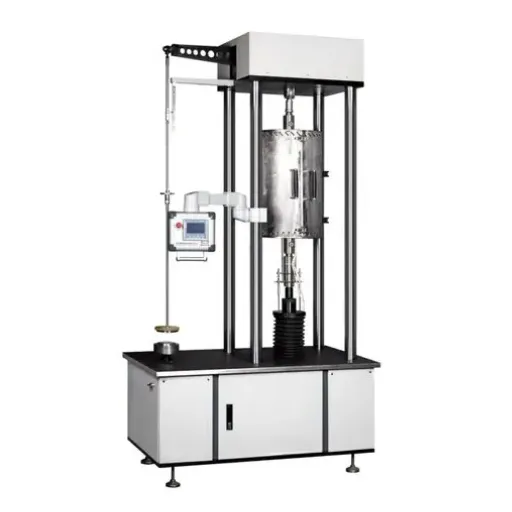
Types of Polymers and Their Properties
Given the structure and behavior under heat and stress, polymers are typically subdivided into three main categories: thermoplastics, thermosets, and elastomers. Each type of polymer has its set of properties and is applied for certain uses. Thermoplastics are generally considered to be ones that soften when heated and solidify when cooled. This property makes them suitable to be reused and molded multiple times in any industry, especially packaging and automotive.
Thermoplastics
Soften when heated, solidify when cooled. Reusable and moldable multiple times.
Thermosets
Form rigid 3D networks when heated. Cannot be remelted once cured.
Elastomers
Capable of strong elasticity, can stretch and return to original shape.
Thermosets, on the other hand, are polymers that, when heated, chemically change to form a rigid, three-dimensional network. Thermosets cannot be revived by remelting once cured, thus they find application in areas that require heat resistance and structural stability such as in electrical insulation and as in composite materials. Their durability and resistance to deformation under heat make them very popular.
Elastomers or rubbery materials are capable of strong elasticity to stretch and resort back to their original shape. This property results from their unique molecular structure and cross-linked polymer, which promotes flexibility. These materials find applications where such qualities of an elastomer are essential, namely seals, gaskets, tires, and so on. Each polymer type plays a crucial part in material designing nowadays to offer a solution customized for numerous engineering and industrial problems.
Role of Stress Relaxation in Polymer Behavior
In the stress relaxation of polymers, there is gradual internal stress reduction, produced by some deforming agent, with respect to time even though the deformation is kept constant. This behavior comes essentially from polymer viscoelasticity-that is, polymer materials behave partly like an elastic spring and partly like a viscous fluid. Stress relaxation occurs often as chain molecules rearrange themselves to release tensions induced by the applied load.
This property becomes important when polymer materials are subjected to sustained loads, as in the case of seals or gaskets. While doing so, stress relaxation inevitably influences the ability of the material to hold the seal or carry a load. Thus, by studying stress relaxation, engineers and designers can predict the performance, tailor materials for specific applications, and ensure a durable design in the designers’ use of polymers.
Other parameters affecting stress relaxation include the type of polymer, the temperature, and the time scale of deformation. Thermoplastics, for example, usually show faster stress relaxation than thermosets because of the very difference in their molecular structures. Generally speaking, the study of stress relaxation gives one in-depth knowledge pertaining to the physical behavior of polymers and assists one in the selection of the best materials for long-time performance.
Applications in Various Industries
Stress relaxation behavior of polymers is of the utmost importance in various fields of applications, allowing the design of materials for diverse purposes. Practically, this knowledge finds applications in the automotive sector-an area with plenty of demand. Many components like seals, gaskets, and vibration dampers need to maintain their functionality under a sustained load over time. Bearing in mind stress relaxation phenomena, engineers can choose or design polymers that will show reduced deformation and thus mechanical integrity during harsh environmental conditions.
Industry Applications
- Automotive: Seals, gaskets, vibration dampers
- Medical: Catheters, surgical sutures, prosthetics
- Electronics: Insulation, connectors, protective coatings
The medical industry also depends on stress relaxation for reliable product development. Polymers in medical devices such as catheters, surgical sutures, and prosthetics need to exhibit stability in their performance when subjected to bodily stresses. Studying stress relaxation guarantees these materials maintain their properties for a longer period, thus securing patient safety and efficient device application.
In addition, the electronics sector depends on polymer materials with predictable stress relaxation behavior for insulation, connectors, and protective coatings. These products should retain their properties, despite temperature changes and mechanical loads applied for long periods. Stress relaxation studies enable manufacturers to improve on the life span and reliability of electronic gadgets so they can function well in challenging environments.
Creep and Its Relationship to Stress Relaxation
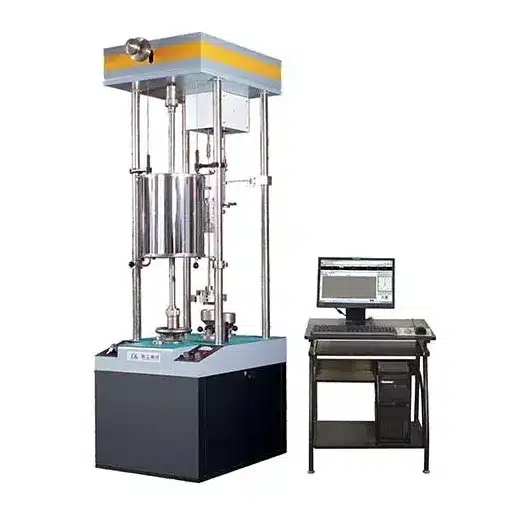
Definition of Creep and Mechanisms Involved
Usually, creep occurs in the presence of a high temperature that speeds up the deformation under the load. Creep thus entails the slow deformation of a material, which is dependent on the applied stress. The deformation is always considered time-dependent. Thus, the phenomenon of creep is mainly concerned with metals, polymers, and ceramics, for the long-term load applications.
Three Stages of Creep:
- Primary Creep: Decreasing rate of deformation due to material hardening
- Secondary Creep: Relatively constant strain rate in equilibrium
- Tertiary Creep: Accelerated deformation leading to material failure
Based on the rate of deformation, one can classify creep into three stages. The first stage, or primary creep, is characterized by a decrease in the rate of deformation owing to hardening of the material. Secondary creep is characterized by a relatively constant rate of strain, whose rate depends on an equilibrium between strain hardening and recovery processes. The tertiary stage is the accelerated deformation that leads to the failure of materials. The cause of accelerated deformation is usually microstructural damage, such as void formation and microcracking of grain boundaries.
Understanding creep behavior is of paramount importance when engineering materials and components for use under extreme conditions such as those in the aerospace, energy, and construction industries. By practically testing materials for creep resistance and then using this information in predictive modeling, engineers can select the very best materials to enhance safety, durability, and performance in demanding environments.
Creep Testing: Methods and Equipment
Creep testing is a very important test to check how materials behave under a load for a long time at relatively high temperatures. The intention of the creep test is to assess the ability of resisting deformation of the material over a period of time, which is very much crucial for those components working in very high-stress environments. Such tests are carried out by applying a constant load or stress to the specimen and maintaining it at some precise temperatures for hours and/or days.
There exist some major methods that these tests are using. The most common ones are the constant-load creep tests, where a fixed stress is applied to the specimen and deformation is recorded over time, or the constant-stress tests, where the load is adjusted as the cross-sectional area of the specimen changes to maintain stress levels. Then there are stress rupture tests, which under defined stress and temperature conditions aim instead at determining the time to failure. Irrespective of the method, modern equipment used for creep tests guarantees that temperature and load and measurement will be controlled precisely, ensuring accuracy and reproducibility of data.
The creep testing equipment typically includes a high-temperature furnace with a loading device that can apply constant or variable stress. Displacement or strain is measured by an extensometer or a strain gauge, ensuring accurate measurements during deformation. The results of the test feed into models that predict long-term performance of materials, helping industries in designing components safely and effectively.
Impact of Creep on Material Performance
Creep greatly affects the performance and reliability of materials and may be considered so in applications with high temperatures or where loads last over a period of time. It causes very slow deformation, changes in structural integrity, and finally failure of crucial components. The aerospace industry, power generation, and construction industries are quite concerned about creep because even minor deformations could spell very serious implications on safety and functioning.
By exploring creep behavior, designers try to avert such scenarios by designing components that minimize their effects. They ensure operational suitability through material selection for creep resistance, design optimization, and timely testing. Variables such as temperature, magnitude of applied stress, and material type are taken into account on the basis of these data for designing against creep.
Simply put, the effect of creep on material properties emphasizes the critical need for detailed testing and proper material selection during design. Accurate data regarding creep serves as the basis for the development of life expectancy models for components. These models, in turn, dictate design and maintenance schedules, thereby preventing failures and ensuring maximum usage and safety of a system.
Conducting a Stress Relaxation Test
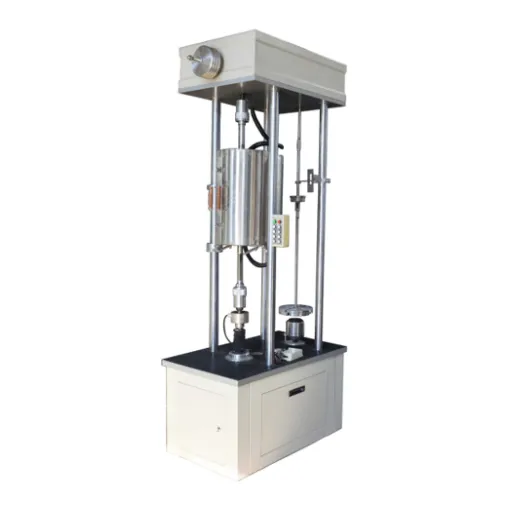
Step-by-Step Test Method
Testing Procedure:
-
1
Prepare the Test Sample: Select the sample with dimensions of a material of appropriate specification. Place it in an environment with controlled temperature to stabilize it and remove any stresses from the outside.
-
2
Set Up the Equipment for Testing: Insert the specimen into the stress relaxation tester. Adjust the clamps or grips to apply the initial tensile load evenly on the sample to avoid incorrect reading.
-
3
Apply Stress Initially: Apply a fixed amount of stress to the material. During the test, such stress level has to remain constant to observe force variations over time.
-
4
Observe the Relaxation: The stress is recorded falling in a certain time interval with the environmental conditions kept constant, especially temperature. The stress value had better be logged accurately by sensors or instruments.
-
5
Analyze the Results: After the conclusion of the tests, draw the relaxation curve to observe the evolution of stress in the material with the time and with the help of these data, one will be able to assess the suitability of the material for applications intended to work along a long time under tension.
Going through these stages allows one to determine the stress relaxation behavior of materials and thus produce data for the design steps. Properly carried out testing will guarantee the reliability of materials and help in predicting their performances within real-life conditions.
Common Tools and Equipment Used
Stress-relaxation testing of materials is basically a tool-dependent method requiring utmost precision and reliability so as to ensure correct measurements. At the heart of the testing procedure is the universal testing machine (UTM). The UTM can be engaged to subject a material to a force on the spot or to strain it to a set value which is then held for a pre-appointed time. The machine subsequently records the stress decay of the material at constant strain and this information is crucial in the study of material behavior.
| Equipment | Function | Purpose |
|---|---|---|
| Universal Testing Machine (UTM) | Apply and hold constant strain | Core testing equipment |
| Extensometers | Measure deformation | Track strain during testing |
| Strain Gauges | Precise strain measurement | Ensure constant strain |
| Environmental Chambers | Control temperature/humidity | Simulate real-world conditions |
Other tools include extensometers or strain gauges that are responsible for measuring distortions during the test. They allow for tracking under tension and also ensure that the applied strain does not change during testing. Thus, these devices provide exact measurements that provide reliable results.
Environmental chambers may also be needed if tests are to be carried out under specific conditions of temperature and humidity. They accommodate the simulation of a real-world scenario where the material may undergo certain extreme or steady environments during application. Working together, these tools guarantee an all-encompassing grasp of stress-relaxation behavior, leading to proper material selection and design improvements.
Best Practices for Accurate Results
Good quality results with stress-relaxation testing require proper preparation of materials and equipment prior to testing. Materials should be ensured to be free from defects or any conditions that may impair their behavior. Hence, it must be cleaned, conditioned to the requisite temperature, or humidity level, and made up of standard specimens as per the relevant testing protocol.
Best Practices Checklist:
- Ensure materials are defect-free and properly conditioned
- Calibrate equipment according to relevant standards
- Maintain regular equipment maintenance schedules
- Control environmental conditions (temperature, humidity)
- Follow testing procedures and standards precisely
- Record all test parameters and results for traceability
Another important best practice relates to accurate calibration and maintenance of the testing equipment. Equipment for stress-relaxation tests must be accurately calibrated as stipulated on related standards. There should also be control of regular maintenance to ensure the equipment is working accurately so as to rule out any mechanical errors that could influence the test result.
Also, testing procedures and standards must be followed to the letter. Arrange tests in a controlled environment, such as temperature- and humidity-regulated chambers, to bring about precise simulations of real-life conditions. Record all test parameters and results to allow hearts of traceability and repeatability. Following through these best practices guarantees that the testing process is accurate, consistent, trustworthy, and yielding the evaluation of better materials and decision-making.
Interpreting Stress Relaxation Test Results
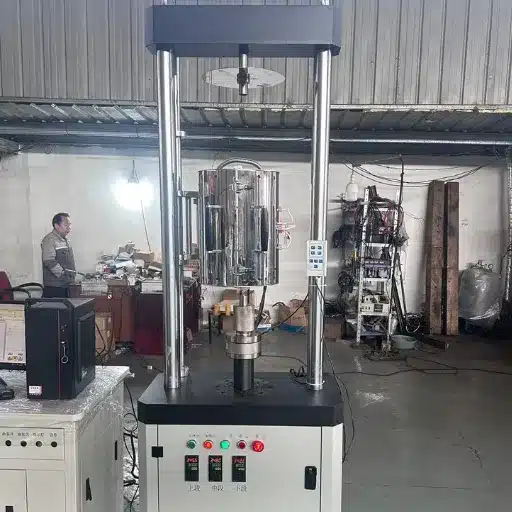
Understanding Data and Graphs
Key Metrics to Analyze:
- Stress Decay: The chief metric to observe in analyzing stress relaxation test data is the decay of stress with time under constant strain
- Graph Analysis: Stress relaxation graphs normally show a sharp decline in stress during the initial times, followed by a plateau
- Application of Results: Stress relaxation test results help engineers and designers choose materials that would fit into their application requirement
The chief metric to observe in analyzing stress relaxation test data is the decay of stress with time under constant strain. This is a direct indication of the material response to long-term loading and gives a hint to the material’s elastic and viscoelastic behavior. Stress versus time is usually plotted on a graph, such that the plot shows how fast the material loses its ability to bear stress, which is crucial for judging performance.
Stress relaxation graphs normally show a sharp decline in stress during the initial times, followed by a plateau where the stress remains almost constant as the material stabilizes. The slope of the curve during this early time interval shows the short-term relaxation property of the material, while the plateau provides an indication of how well it sustains integrity in the long term. Materials showing such behavior can then be examined in detail by comparing these trends amongst them for finding the best fit for applications.
Stress relaxation test results help engineers and designers choose materials that would fit into their application requirement for service under expected usage conditions. Be it for seals, gaskets, or structural applications, the knowledge of these characteristics would provide the best fit in terms of reliability and durability in its application. Such correct interpretations would bring about informed applications, thus preventing probable failure of products.
Real-World Implications of Test Results
The test results from the relaxation have very real implications in industries where the efficacy and reliability of the concerned material are of paramount importance. The relaxation tests deliver the very information needed by the engineers for proper material choice, knowledge of which operates under stresses for a long time and through varying environmental conditions, for instance, temperature, pressure, chemical action, or the like. This is utilized in ensuring that the materials considered for use could retain their integrity with use and for the normal period, thus minimizing the risk of failure.
For example, in automotive and aerospace industries, relaxation test results are used for the choice of materials for components such as seals and gaskets, which must resist long periods of exposure to extreme conditions without degradation from those conditions. Thus, knowledge of the relaxation behavior of these materials will provide a better prediction of their performance and hence the safety of the measures taken-especially in reducing the probability of failure, which might cause death or disruption from wear or deformation of materials.
Moreover, sound interpretation of such test results leads to cost-effective decisions and sustainable practices. When materials defined during testing are selected, the product will have a long life and require only little maintenance; hence the overall cost of operation is low. This wishful disposition toward materials means that fewer resources are wasted on trial-and-error ways, a practice already given the thumbs up in industry.
Challenges and Limitations of Stress Relaxation Testing
Stress relaxation testing offers various insightful advantages but faces several challenges and limitations that affect its viability and practicality. One chief challenge remains its lengthy testing time, which is imperative if one wants to get the required data accurately. Stress relaxation happens to be a genuinely time-dependent variable, and most insights can only be obtained after keeping long observations, thereby making the method less practical for any situation that requires data within a short timeframe. The cost and resource implications can, in turn, make long-term testing unattractive.
Key Challenges:
- Lengthy Testing Time: Time-dependent nature requires long observation periods
- Environmental Factors: Temperature, humidity, and external elements affect results
- Material Variability: Different batches show remarkable differences in behavior
- Cost Implications: Long-term testing requires significant resources
Another drawback is the effect of environmental factors on results. Factors such as temperature, humidity, and exposure to other external elements largely affect the material’s behavior during testing. If these parameters are not studied under rigorous control, such results would always be misleading to describe the exact behavior of the material in its service condition. It is, therefore, essential to standardize the environment in which the tests will be carried out; however, it is not always practicable.
The final drawback is the material of the specimen. Different batches or grades of the same material can show remarkable differences in their stress relaxation behavior, thereby making it almost impossible to predict and reproduce test results. For broader applications, this makes it difficult to generalize the results. It calls for the application of control tests under well-defined conditions, with the necessary consideration being given to the properties and applications of the material under investigation.
Frequently Asked Questions (FAQ)
What is a stress relaxation test?
The stress relaxation test measures the decrease of stress in materials over a period when these are subjected to set deformations. It is a critical experiment in the study of viscoelasticity of materials, especially in rubber and plastic materials.
How does a stress relaxation test function?
The setup of the test consists of applying a set load to a tested material while tracking the force with respect to time. The load cell enables stress relaxation tests for materials to be carried out so that how the material behaves under loading over time can be observed.
What factors influence stress relaxation testing?
The factors include those relating to the material tested, the rate of straining, the temperature at test, and the procedures followed. For example, an increase in temperature will increase viscoelasticity and change relaxation behavior.
What materials are used in stress relaxation tests?
The common materials in stress relaxation tests are rubber and plastic materials used in engineering applications. These materials show a significant portion of viscoelasticity and are thus suitable for stress relaxation tests.
Why is temperature control important?
Keeping temperature constant is important as changes in temperature may affect material properties such as stress response and strain rate. Higher temperature tests may reflect different relaxations compared to a low-temperature test.
Can any material be tested under stress relaxation?
Stress relaxation tests can be conducted on viscoelastic materials, plastics, composites, etc. Each material exhibits its own form of stress relaxation in accordance with its constitutions and structures.
How is stress relaxation expressed?
The stress relaxation is usually expressed in terms of percentage reduction of stress with respect to the initial stress applied. This percentage demonstrates clearly how the material behaves when loaded for a greater period of time.
What are Maxwell and Voigt models?
These models are used to describe the viscoelastic nature of materials as observed in stress relaxation tests. The Maxwell model corresponds to materials that maintain a linear stress-strain relationship, whereas the Voigt model represents materials that possess both elastic and viscous characteristics.
How are test results used in applications?
With stress relaxation test results, one can decide about the choice of materials and material design for the various engineering applications. Since the stress relaxation properties dictate how materials would behave when subjected to constant loading conditions and over time, they provide for the design and fabrication of products with guaranteed reliability and safety.
References
- Stress Relaxation and Creep of Polymers and Composite Materials
This document provides experimental studies on creep behavior of plastics, including tensile creep tests under static conditions. - Properties of Polymers – Creep and Stress Relaxation Analysis
Discusses long-term creep and stress relaxation, with insights into short-term testing for product development. - Creep and Stress-Relaxation Test
Explains the principles of creep and stress-relaxation tests, focusing on material deformation over time. - Constitutive Equations for Analyzing Stress Relaxation and Creep
Introduces constitutive equations for analyzing stress relaxation and creep behaviors, based on the standard linear solid model.

